Nissan Interstar vs Renault Scénic – Differences & prices compared
Compare performance, boot space, consumption and price in one view.
Find out now: which car is the better choice for you – Nissan Interstar or Renault Scénic?
The Nissan Interstar (Cargo Van) comes with a Diesel or Electric engine and Manuel or Automatic transmission. In comparison, the Renault Scénic (SUV) features a Electric engine with Automatic transmission.
When it comes to boot capacity, the Nissan Interstar offers , while the Renault Scénic provides 545 L – depending on how much space you need. If you’re looking for more power, decide whether the 170 HP of the Nissan Interstar or the 220 HP of the Renault Scénic suits your needs better.
In terms of consumption, the values are 7.40 L per 100 km for the Nissan Interstar, and 16.60 kWh for the Renault Scénic.
Price-wise, the Nissan Interstar starts at 34900 £, while the Renault Scénic is available from 34600 £. Compare all the details and find out which model fits your lifestyle best!
Nissan Interstar
The Nissan Interstar is a versatile van that expertly combines practicality with modern design. It offers a spacious interior that caters to both cargo and passenger needs, making it ideal for businesses and families alike. With its robust performance and efficient fuel consumption, the Interstar stands out as a reliable choice in the commercial vehicle market.
detailsRenault Scénic
The Renault Scénic, with its distinctive design, captures attention through its sleek and modern aesthetic. Its interior is thoughtfully crafted, offering ample space and comfort for family travel or long journeys. The Scénic stands out with a strong emphasis on practicality, making it an ideal choice for those seeking both style and functionality in a vehicle.
details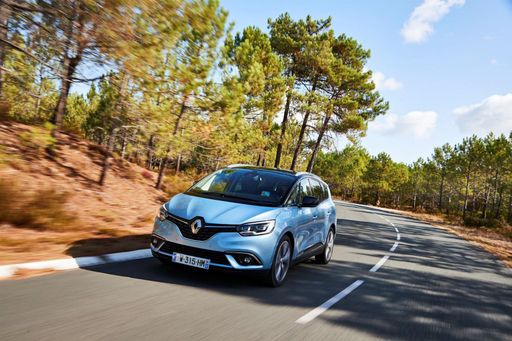 @ Renault
@ Renault
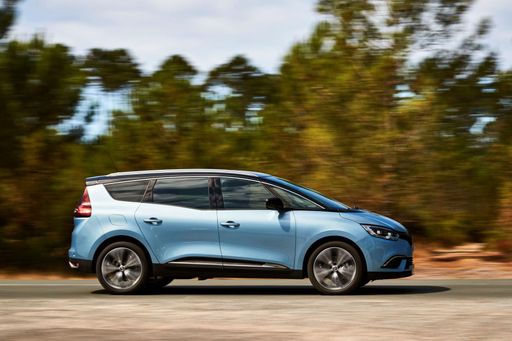 @ Renault
@ Renault
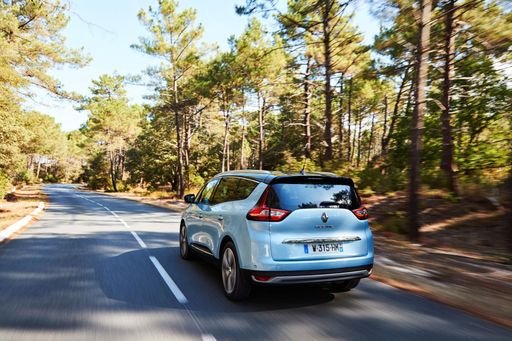 @ Renault
@ Renault
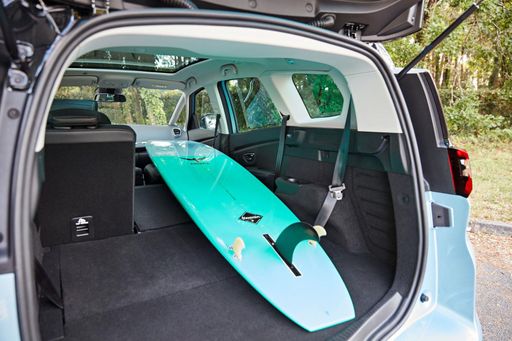 @ Renault
@ Renault
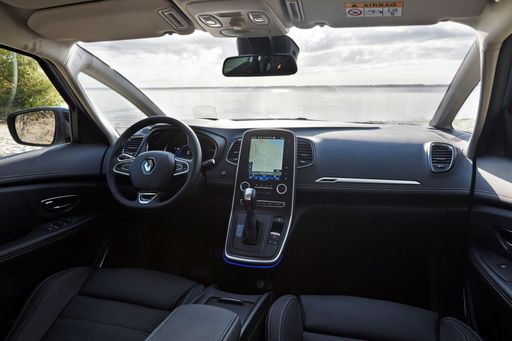 @ Renault
@ Renault

|
|
|
|
|
Costs and Consumption |
|
|---|---|
|
Price
34900 - 55600 £
|
Price
34600 - 44000 £
|
|
Consumption L/100km
7.4 - 7.5 L
|
Consumption L/100km
-
|
|
Consumption kWh/100km
-
|
Consumption kWh/100km
16.6 - 17.5 kWh
|
|
Electric Range
175 - 410 km
|
Electric Range
420 - 598 km
|
|
Battery Capacity
-
|
Battery Capacity
-
|
|
co2
0 - 195 g/km
|
co2
0 g/km
|
|
Fuel tank capacity
80 L
|
Fuel tank capacity
-
|
Dimensions and Body |
|
|---|---|
|
Body Type
Cargo Van
|
Body Type
SUV
|
|
Seats
3 - 7
|
Seats
5
|
|
Doors
4
|
Doors
5
|
|
Curb weight
2053 - 2535 kg
|
Curb weight
1822 - 1927 kg
|
|
Trunk capacity
-
|
Trunk capacity
545 L
|
|
Length
5680 - 6315 mm
|
Length
4470 mm
|
|
Width
2080 mm
|
Width
1864 mm
|
|
Height
2498 - 2756 mm
|
Height
1571 mm
|
|
Payload
965 - 1447 kg
|
Payload
514 - 518 kg
|
Engine and Performance |
|
|---|---|
|
Engine Type
Diesel, Electric
|
Engine Type
Electric
|
|
Transmission
Manuel, Automatic
|
Transmission
Automatic
|
|
Transmission Detail
Manual Gearbox, Automatic Gearbox, Reduction Gearbox
|
Transmission Detail
-
|
|
Drive Type
Front-Wheel Drive
|
Drive Type
Front-Wheel Drive
|
|
Power HP
105 - 170 HP
|
Power HP
170 - 220 HP
|
|
Acceleration 0-100km/h
-
|
Acceleration 0-100km/h
7.9 - 8.6 s
|
|
Max Speed
115 - 177 km/h
|
Max Speed
150 - 170 km/h
|
|
Torque
300 - 380 Nm
|
Torque
280 - 300 Nm
|
|
Number of Cylinders
4
|
Number of Cylinders
-
|
|
Power kW
77 - 125 kW
|
Power kW
125 - 160 kW
|
|
Engine capacity
1997 cm3
|
Engine capacity
-
|
General |
|
|---|---|
|
Model Year
2024 - 2025
|
Model Year
2025
|
|
CO2 Efficiency Class
G, A
|
CO2 Efficiency Class
A
|
|
Brand
Nissan
|
Brand
Renault
|
Nissan Interstar
The Evolution of the Nissan Interstar
The Nissan Interstar has long been a staple in the commercial vehicle sector, known for its robust build and practical design. The latest iterations have further cemented its status with a range of technical enhancements and innovative features aimed at aiding businesses in achieving optimal efficiency. Whether you're navigating city streets or traversing the highways, the Interstar stands out as a reliable workhorse ready to meet various transport needs.
Power and Performance
The current range of Nissan Interstar models boasts diesel engines ranging from 105 to 180 PS, offering a commendable blend of power and fuel efficiency across the board. With a fuel consumption of between 7.4 and 7.5 litres per 100 kilometres, these vehicles are designed to minimise operational costs while maximizing performance.
All models feature four-cylinder engines, with engine displacement between 1997 and 2299 cm³, capable of producing torque figures between 330 and 400 Nm. These specifications ensure that the Interstar offers superior pulling power, which is particularly useful for transporting heavy loads across different terrains.
Transmission and Drive Options
Versatility is at the heart of the Nissan Interstar, with transmission options including both manual and automatic gearboxes. Drivers can also choose between front-wheel and rear-wheel drive configurations, allowing the vehicle to suit specific logistical requirements or personal preferences.
For those seeking simplicity and ease of use in urban environments, the Interstar with its automated gearshift provides a smooth driving experience, reducing driver fatigue and increasing focus on the road ahead.
Dimensions and Load Capacities
The Nissan Interstar is available in various lengths, from 5048 mm to an extensive 6848 mm, catering to diverse commercial needs. With widths ranging from 2070 mm to 2222 mm and heights from 2307 mm to 2808 mm, the Interstar offers multiple configurations to maximise cargo space and accommodate various loads.
With a maximum payload capacity of up to 1451 kg, businesses can rest assured that the Interstar is more than capable of delivering goods efficiently without compromising on safety or comfort.
Innovation and Technological Features
While functionality remains a priority, Nissan has not skimped on technological advancements. Among the innovations included are advanced safety features, such as anti-lock braking systems (ABS), electronic stability control (ESC), and a variety of sensors to assist with parking and reversing.
In terms of driver comfort, the brand offers multiple trim levels with exceptional interior features designed to enhance driver experience during long hauls. Options such as climate control, advanced navigation systems, and modern infotainment setups are available, ensuring that both driver and passenger remain comfortable and connected, regardless of the journey length.
Coachwork and Trim Options
The Interstar line-up provides a range of trim levels and equipment lines, from the entry-level Visia to the high-spec Tekna, catering to different market demands and individual preferences. The selection allows buyers to prioritise features that best suit their operation or driving style.
For example, the N-CONNECTA variant offers an array of added extras, enhancing both connectivity and comfort for drivers who rely on the vehicle as a mobile office.
Conclusion
The Nissan Interstar represents a harmonious blend of power, efficiency, and technological innovation in the large van segment. With its vast array of options and features, the Interstar is undeniably a top choice for businesses looking to invest in a dependable and adaptable commercial vehicle. As the line-up continues to evolve, the Interstar remains poised to meet the growing challenges and demands of the modern logistic landscape.
Renault Scénic
Introducing the All-New Renault Scénic: A Leap into the Future
The Renault Scénic has long been a family favourite, and with its latest iteration, it offers a blend of advanced technology, impressive performance, and eco-friendly credentials. The 2024 model year makes a grand entrance with its electric-only range, showcasing the brand's commitment to a sustainable future.
Powerful Performance Range
The latest Renault Scénic range offers two power specifications to cater to different driving needs. With power outputs ranging from 170 to 220 PS, and a torque between 280 and 300 Nm, there's plenty of punch to ensure a dynamic driving experience. Choose the variant that suits your lifestyle, whether it's the Comfort Range with a satisfying 420 km electric range or the Long Range capable of 598 km on a full charge.
Sleek Design and Comfort
Renault has effectively transformed the Scénic into a suave SUV, integrating both style and functionality. It measures 4470 mm in length, 1864 mm in width, and stands 1571 mm tall – dimensions that promise ample interior space while maintaining a sporty silhouette. The five-seat configuration ensures comfort, with a spacious 545-litre boot capacity making it ideal for family trips or weekend getaways.
Efficiency at Its Core
With an efficiency of 16.7 to 17.6 kWh per 100 km, the Renault Scénic provides an excellent balance of performance and economy. On top of that, it maintains a CO2 efficiency class of A, delivering 0 g/km, which is a testament to its dedication to reducing environmental impact. Furthermore, the monthly cost ranges from €1021 to €1172, and €0.408 to €0.469 per km, ensuring the Scénic is economically sensible as well.
Innovative Technology Package
The Renault Scénic is packed with innovative technology to enhance the driving experience. The standard automatic transmission is complemented by a reduction gearbox, ensuring smooth and responsive acceleration. Multiple trim levels, including Evolution, Techno, Esprit Alpine, and Iconic, offer a variety of features to match your preferences.
Safety and Practicality
Safety is paramount in the Scénic, with its robust build and suite of advanced safety features. The model’s design also accounts for practicality, with a payload capacity ranging from 514 to 518 kg, making it fit for daily errands and heavy loads alike. Additionally, its top speed ranges up to 170 km/h, providing peace of mind on motorways.
Concluding Thoughts
Renault has truly pushed the boundaries with the new Scénic, creating an all-electric vehicle that marries sophistication with practicality. Whether navigating urban landscapes or exploring the open road, the Scénic delivers on both style and substance for the discerning eco-conscious driver.
Which drive types are available for the Nissan Interstar?
Available as Front-Wheel Drive.
The prices and data displayed are estimates based on German list prices and may vary by country. This information is not legally binding.
